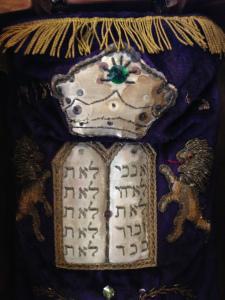
As an interfaith child, an interfaith partner, and a parent of two grown interfaith children, I celebrate the announcement this week that Reconstructionist Rabbinical College, the seminary of the fourth largest Jewish movement, will now admit and ordain rabbinical students in interfaith relationships.
I am informally connected to a growing network of clergy partnered with people from other (or no) religions. These brave souls prove every day that you can be a passionate leader in your own religion, and love someone from another religion. These clergy often have felt closeted, to one degree or another. The change in Reconstructionist policy (following the longtime policy of the smaller Secular Humanistic Jewish movement) will bring about real change in the ability of rabbis to love across religious boundaries, and will bring broader acceptance for interfaith families in general.
I also know many passionate Jewish leaders in interfaith relationships who assumed they could never be rabbis. Some will be inspired to enter the Reconstructionist movement, and rabbinical school, in the wake of this historic shift. The Reconstructionists will benefit, those who want to become rabbis will benefit, but most importantly, interfaith families who want to engage with Judaism will benefit. It’s a win, win, win. And yes, I expect Reform Judaism, my own movement, to follow the Reconstructionists down this pathway.
So, now that we will have rabbis in interfaith partnerships, those rabbis will have interfaith children. In the Jewish community, much has been written, and will be written, about how interfaith families can (and should) raise children “exclusively Jewish,” whether or not the partner converts to Judaism. And it is absolutely true that children with interfaith parents can grow up to become committed Jewish professionals: the growing number of rabbis and rabbinical students born into interfaith families is a testament to that fact.
Reconstructionist Rabbinical College also released this week new “Desired Attributes” for admission, including this: “Models commitment to Jewish community and continuity in one’s personal, familial, and communal life.” With the code word “continuity,” this sentence hints at, but does not state, an expectation that applicants would need to convince partners to commit to raising “exclusively Jewish” children. And this kind of commitment would certainly be necessary for a rabbi to obtain a pulpit position in almost any synagogue. At least for now. But read on.
Exactly two years ago this week, Pew Research released their report, “A Portrait of Jewish Americans,” documenting 25% of Jewish parents with interfaith partners raising children “partly Jewish and partly in another religion.” Just days later, my book Being Both hit the shelves—a book dedicated to describing why and how so many of us have chosen this interfaith pathway. We are not people who are choosing to be religious nones. We are people deeply engaged with Judaism. We want and need rabbis.
And we look forward to having rabbis who understand us on a whole new level: rabbis with committed Christian or Buddhist or Hindu partners. And eventually, rabbis with children who are learning about their interfaith heritage, by osmosis, and more formally. Based on my research with hundreds of interfaith families, and my lifetime of experience, I don’t believe any child born into an interfaith family can ever feel solely connected to one religion or another. I see this as an inspiring revelation, not a grave problem. And interfaith children testify to the benefits of interfaith education. Listen to the words of a college student raised with Catholicism and Judaism, who ultimately chose Judaism, as described in Being Both: “I feel even closer to the religion I ended up going with because I was able to choose it.”
Going forward, it is going to become more and more difficult to characterize the idea of interfaith education for interfaith children as somehow beyond the pale. While many Jewish leaders insist on continuing to oppose and denigrate “intermarriage,” the growing majority of young people with Jewish heritage have simply moved on. Many of us come from interfaith families. We are loving each other. We are marrying each other. We are having children. And at least a quarter of us are engaging with Judaism by giving our interfaith children an interfaith education. We look forward to embracing the pioneering rabbis who will, inevitably, join us on this inspiring journey.
Susan Katz Miller’s book, Being Both: Embracing Two Religions in One Interfaith Family is available now in hardcover, paperback and eBook from Beacon Press.

